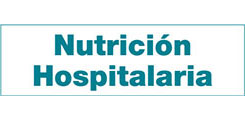Trabajo Original
Body mass index cutoff point estimation as obesity diagnostic criteria in down syndrome adolescents
Juan Eduardo Samur San-matín, Ezequiel Moreira Gonçalves, Fabio Bertapelli, Roberto Teixeira Mendes, Gil Guerra-júnior
 Número de descargas:
7791
Número de descargas:
7791
 Número de visitas:
8713
Número de visitas:
8713
 Citas:
2
Citas:
2
Compártelo:
Introduction: Adolescents with Down syndrome (DS) show high rate of overweight and tend to accumulate high amount of fat compared to the same people without the syndrome.Objective: To estimate the cutoff point of the Body Mass Index (BMI) for the diagnosis of obesity in adolescents with DS according to different references for BMI in relation to the percentage of body fat (%BF) measured by dual-energy X-ray absorptiometry (DXA).Methods: The sample was composed of 34 adolescents with DS (aged: 10 to 17 years old). BMI was evaluated according to the references of the International Obesity Task Force (IOTF), the World Health Organization (WHO) for the general population, and Myrelid et al. and Styles et al. for people with DS. The %BF was assessed by whole body DXA and classified according to National Health And Nutrition Examination Survey (NHANES, 2011).Results: The boys were significantly taller than the girls and this %BF higher than boys. All references who have used BMI to assess obesity was positively associated with %BF measured by DXA in the diagnosis of obesity. Using the ROC curve in relation to %BF by DXA, all references showed high sensitivity, but the z-score of BMI by WHO showed better specificity, with the value of the accuracy of 0.82 for the cutoff point above 2.14.Conclusions: All the references used for the diagnosis of obesity were associated with %BF measured by DXA, and the cutoff point of z-scores above 2.14 by WHO showed better specificity.
Palabras Clave: Down syndrome. Body mass index. ROC curve. DXA. Anthropometry.
Artículos más populares
Revisión: Inteligencia artificial generativa ChatGPT en nutrición clínica: avances y desafíos
ChatGPT y otras herramientas de inteligencia artif...
Revisión: Suplementación con micronutrientes y sus beneficios: ¿por qué y cuándo?
Introducción: los micronutrientes participan en la...
-
Licencia creative commons: Open Access bajo la licencia Creative Commons 4.0 CC BY-NC-SA
https://creativecommons.org/licenses/by-nc-sa/4.0/legalcode




